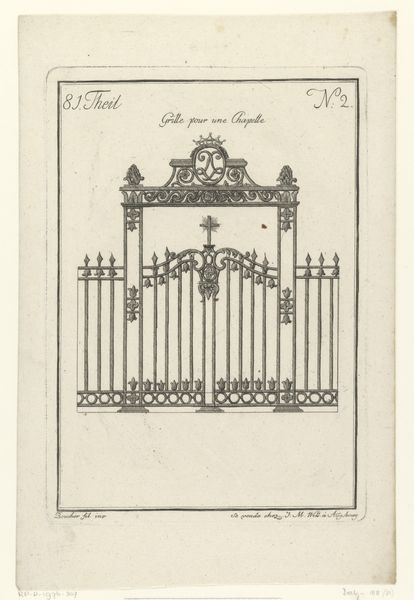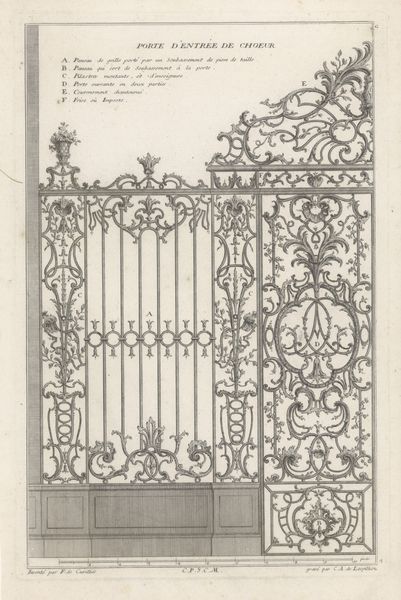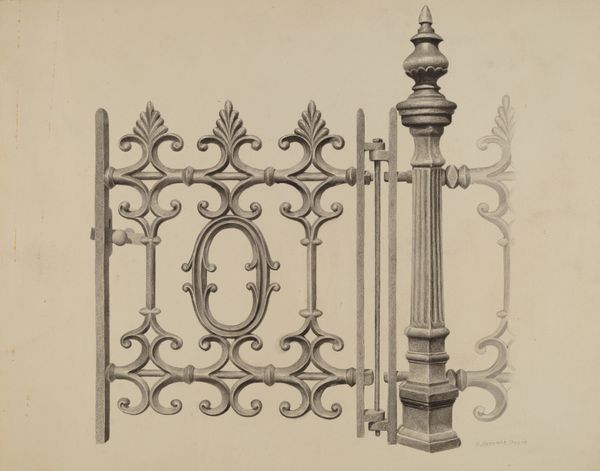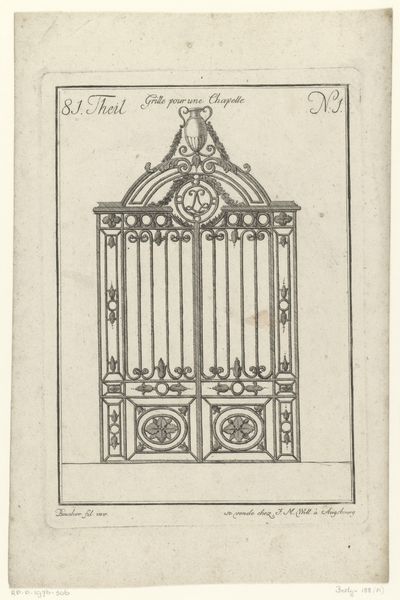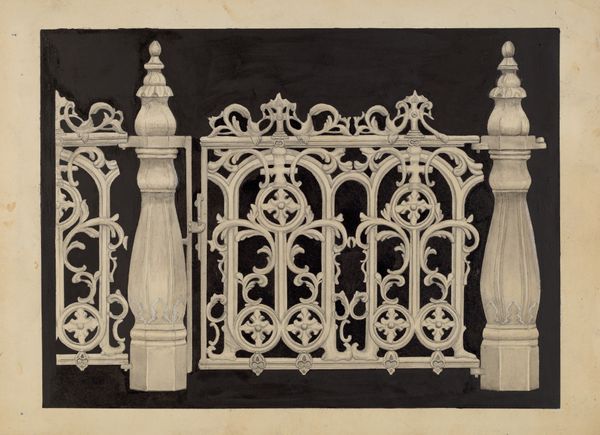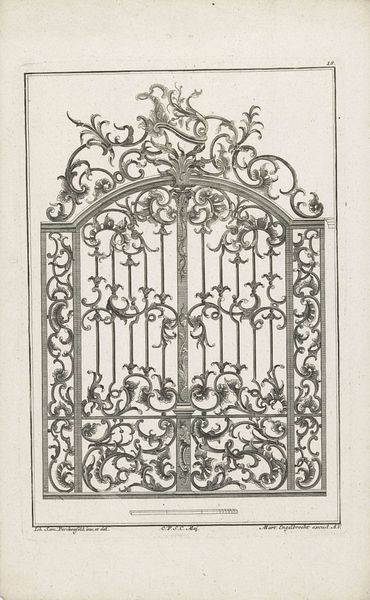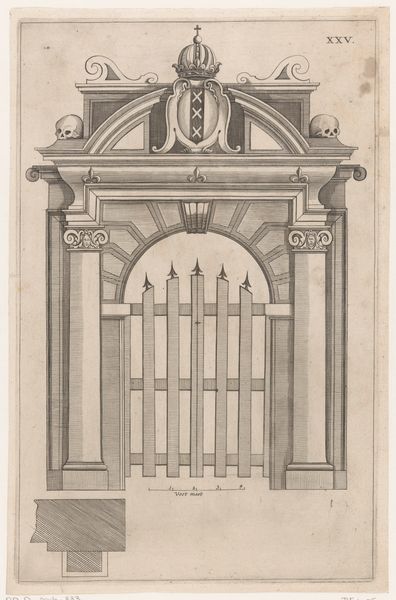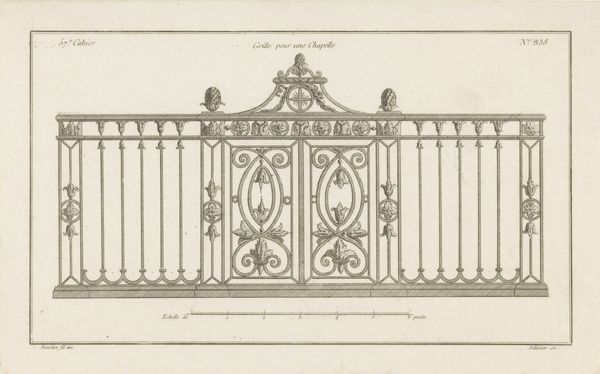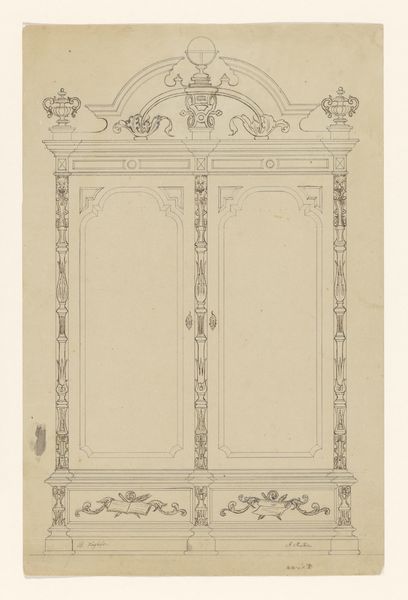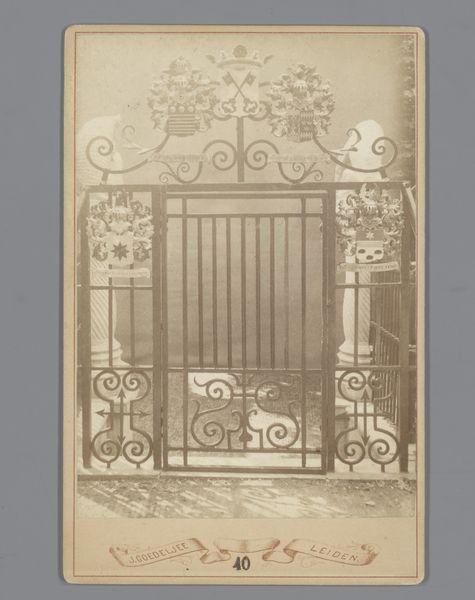
Design for the Cast Iron Gate of Castle ‘s-Gravenwezel (Belgium) 1742
0:00
0:00
drawing, print, etching, architecture
#
drawing
#
baroque
# print
#
etching
#
geometric
#
line
#
decorative-art
#
architecture
Dimensions: Sheet: 20 3/8 × 14 5/8 in. (51.7 × 37.1 cm)
Copyright: Public Domain
Editor: Here we have Jan Pieter van Baurscheidt the Younger's "Design for the Cast Iron Gate of Castle 's-Gravenwezel," created in 1742, displayed at the Met. It is an etching or print, offering a very precise design of Baroque architecture. I'm immediately drawn to the intricacy and density of the ironwork. It’s incredibly ornate! What strikes you when you look at this piece? Curator: What I see is an articulation of power, expressed through very deliberate visual language. Gates are thresholds, aren't they? Points of transition, exclusion, and, in this case, declaration. What symbols resonate with you? Editor: I see many floral motifs. Is that simply decorative, or is there something more? Curator: The floral motifs in Baroque art, particularly in architectural designs like this gate, often symbolized prosperity, growth, and the flourishing of the patron’s lineage. The gate isn't just a barrier; it's a carefully constructed statement of status and permanence, what Freud might term a defense mechanism against mortality itself. Do you notice any other recurring images? Editor: Now that you mention it, the finials topping each gatepost. They look like stylized urns, maybe? Curator: Precisely. Urns have been used to represent memory, loss, and continuity across cultures and eras. In the context of a castle gate, such as this one for ‘s-Gravenwezel, these urns, filled perhaps with heraldic devices or sculpted foliage, transform the entrance into a memorial. Do you see how the overall composition reinforces the symbolic weight? Editor: The symmetry, the rigid vertical bars combined with the organic flourishes. It’s both imposing and inviting in a strange way. I hadn’t really considered all the potential meanings woven into this design before. Curator: Indeed, and seeing this gate through the lens of cultural memory, it speaks volumes about the enduring power of symbols. It’s like a visual echo across generations.
Comments
No comments
Be the first to comment and join the conversation on the ultimate creative platform.
